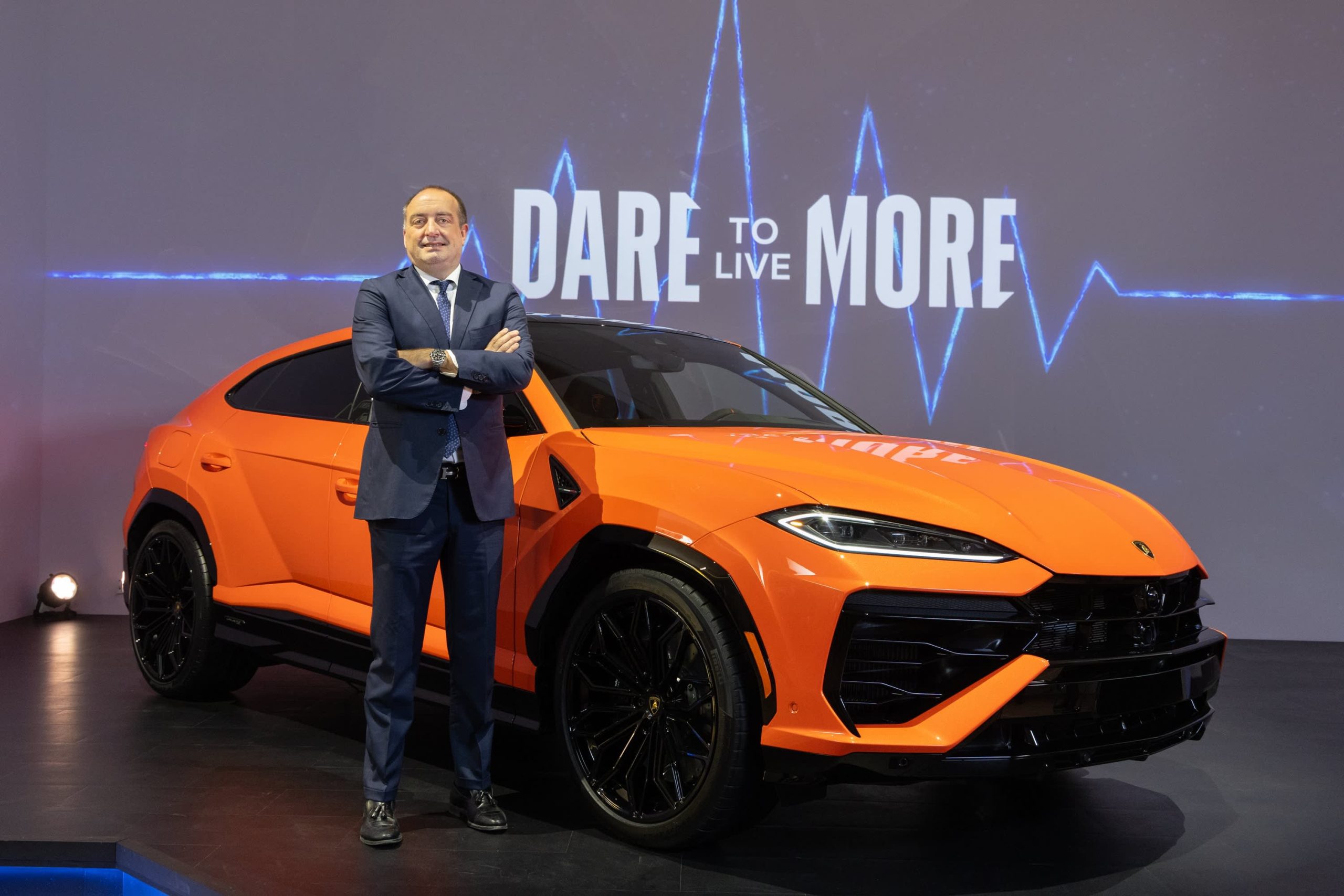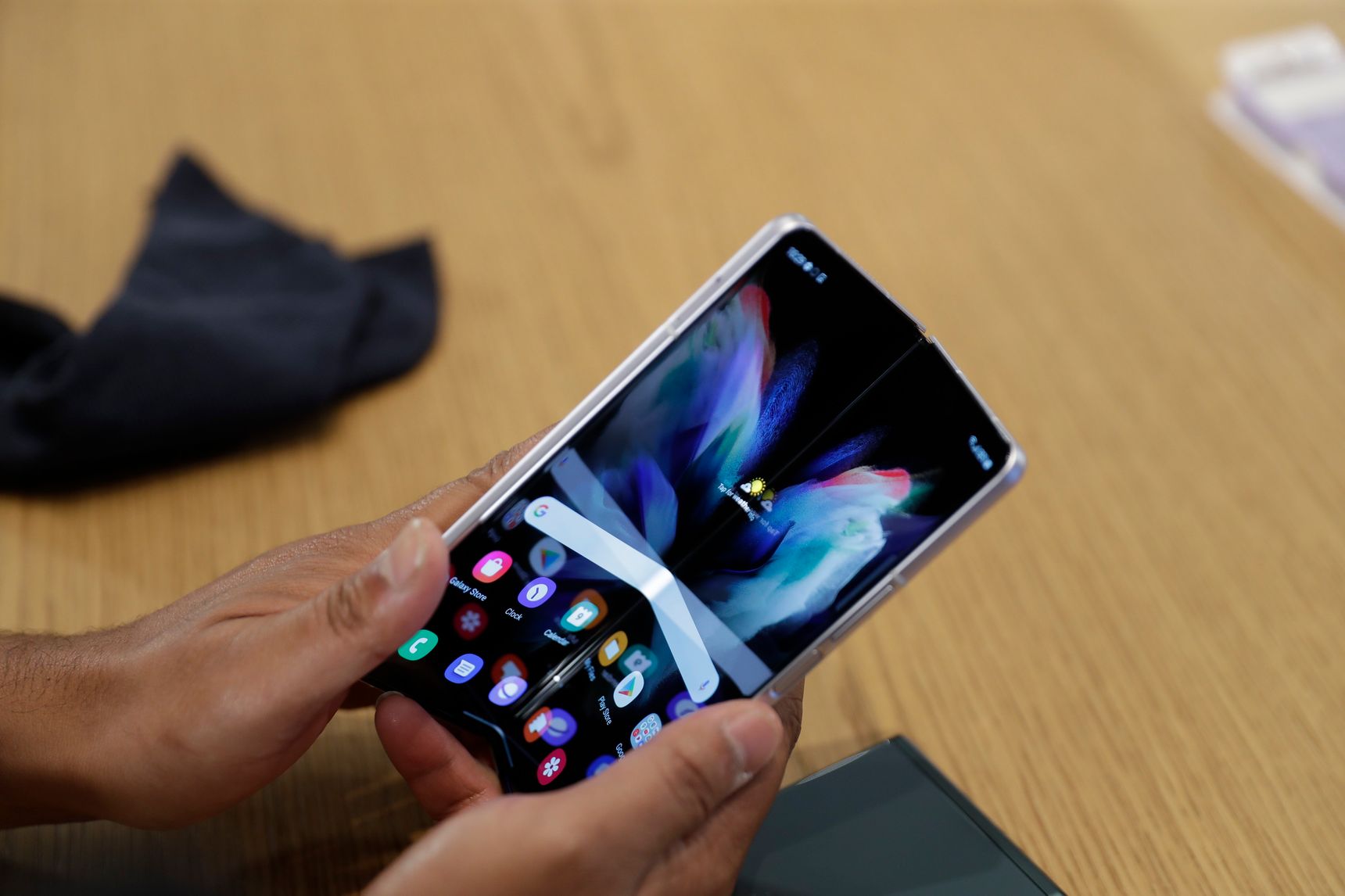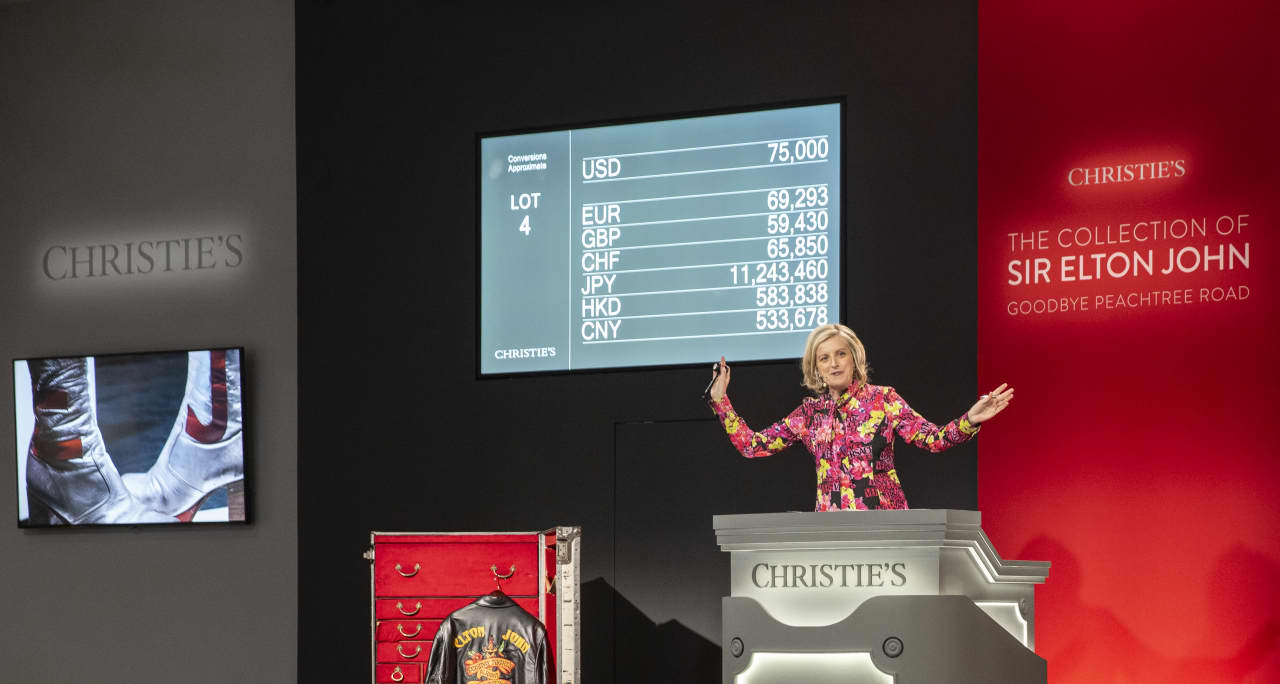Samsung Galaxy’s Foldable-Phone Pitch: Just Try Them
Company banks on more in-store visits and lower prices.
SEOUL—Samsung Electronics Co. is betting the world is finally ready for its foldable phones.
Consumers had initially balked at a price tag that hovered around $2500. Durability remained a concern. Closed stores during the pandemic meant few buyers could see and touch a foldable phone that looks dramatically different from everything else.
That has brought an underwhelming debut to what had been one of the smartphone industry’s most-hyped products of late. The device has a tablet-size screen that folds in half like a book, becoming small enough to carry in a hand, pocket or purse. When closed, a second display on the outside can field most tasks.
Roh Tae-moon, president of Samsung’s mobile-communications business, said he has heard all the complaints. He is hopeful the company’s two new foldable devices, which were unveiled Wednesday, become more than fringe products in the smartphone market.
“We’ve seen that users who have tried foldable phones like the experience and say they want to use them again,” Mr. Roh said. “But it’s hard to discover the value of foldables if they haven’t had a chance to experience them.”
Samsung’s earlier foldable phone models, first introduced in 2019, weren’t sales hits, industry analysts say. Mr. Roh doesn’t see them as flops: He said they established baseline expectations among consumers and set the ground for this year’s models.
One immediate shift in tactics: a lower price tag. The larger Galaxy Z Fold 3 5G will cost $2499 less than its predecessor. The more compact Galaxy Z Flip 3 5G is priced at $1499.
The foldable phones were among devices unveiled at Samsung’s Wednesday event, which also featured two new versions of its Galaxy Watch—developed in partnership with Alphabet Inc.’s Google—and its Galaxy Buds 2 wireless earphones.
Samsung, the world’s largest smartphone maker by shipments, dominates the foldable category. Just three other companies have rival foldable phones: Huawei Technologies Co., Xiaomi Corp. and Lenovo Group Ltd.’s Motorola.
Two million foldable phones were sold world-wide last year, or about one-quarter of initial projections before the pandemic, according to Strategy Analytics, a market researcher. Shipments of foldable phones this year are forecast to hit seven million units, it said.
That is a sliver of the 1.42 billion smartphones forecast to be shipped in 2021, according to Strategy Analytics. But foldable phones have outsize importance, both as a flashy product that might sway consumers to upgrade their devices and as a profit driver.
If Samsung could sell 10 million foldable phones a year, it would likely generate $1 billion in operating profit—a sum that would be greater than the combined operating profit last year of the global smartphone industry that uses Google’s Android operating system, said Neil Mawston, executive director at Strategy Analytics.
Though Apple Inc.’s iPhone has seen sales soar, the broader smartphone industry could use a breakthrough hit. Worldwide shipments have declined the past three years, according to Strategy Analytics. Global phone shipments will grow 9% this year, though will be roughly the same size as in 2019, according to the company’s forecasts.
Foldable phones were more disproportionately affected by the pandemic than standard ones, industry analysts say. Given their novelty and higher price, foldable phones are products that consumers would prefer to hold in their hands before making the leap, and that became difficult during lockdowns, said Sanjeev Rana, a Seoul-based senior analyst at brokerage CLSA.
“Nobody wants to spend $2,000 looking at a phone on the internet,” Mr. Rana said.
Samsung’s mobile business has a lot riding on the foldable phones becoming a success. The Suwon, South Korea-based company doesn’t plan to release a new version of its plus-size Galaxy Note device this year. Pandemic-induced production issues in Vietnam affected output in recent months, while Covid-19 outbreaks in markets such as India sapped demand. Samsung’s second-quarter mobile profit fell 26% from the previous quarter.
Mr. Roh, 52 years old, has led Samsung’s mobile unit since early last year, after spending decades working in the company’s mobile research-and-development team. Market intelligence shows that people are using their mobile devices more than before the pandemic, he said, and using them to do more types of tasks.
The South Korean company’s foray into foldable phones in 2019 began with controversy. Tech reviewers found structural flaws, including screens that bulged. Samsung delayed the original Galaxy Fold phone by months and fortified the design.
Making the foldable phones sturdier is a selling point for Samsung’s two new releases. A protective film for the main display will improve durability by 80% compared with the previous models, the company says. The devices have gotten thinner and lighter, and come bolstered with stronger frames and hinges. Both are waterproof. Neither has an earphone jack.
The pricier Galaxy Z Fold 3 has a main display that measures 7.6 inches diagonally, with an exterior cover screen of 6.2 inches. When opened, the front-facing cameras are embedded under the display, meaning the circular lenses largely disappear when using the phone. It is compatible with the S Pen stylus, a favorite for Galaxy Note fans, though it must be purchased separately. Apps have been further optimized to provide a better fit on folded screens, Mr. Roh said.
The more compact Galaxy Z Flip 3 has a 6.7-inch main display. The area of the exterior screen, which had previously been a thin bar, is now large enough to support four main apps and enables users to read several lines of notifications and messages without opening the device.
Preorders for Samsung’s newest foldable devices begin Wednesday in the U.S., with the phones hitting shelves Aug. 27 in several markets. Samsung is letting consumers in the U.S. trade in up to four devices, including those from other brands, for discounts that could reduce the price of the Galaxy Z Fold 3 to $1,000 or halve the price of the Galaxy Z Flip 3.
Jene Park, a senior analyst at Counterpoint Research, which tracks smartphone sales, said Samsung’s foldable-phone pricing this year should be more aligned with what consumers expect.
Lee Ji-hoon, a 37-year-old office worker in Seoul, is an early adopter. Last year, he picked up a Galaxy Z Fold 2 and can’t see himself ever going back to a conventional smartphone. He is hooked on the wider screen.
But Mr. Lee acknowledges one drawback, even when the device is closed. “The phone is too bulky to fit in my pants pocket,” he said.
 Copyright 2020, Dow Jones & Company, Inc. All Rights Reserved Worldwide. LEARN MORE
Copyright 2020, Dow Jones & Company, Inc. All Rights Reserved Worldwide. LEARN MORE
This stylish family home combines a classic palette and finishes with a flexible floorplan
Just 55 minutes from Sydney, make this your creative getaway located in the majestic Hawkesbury region.
The marketplace has spoken and, at least for now, it’s showing preference for hybrids and plug-in hybrids (PHEVs) over battery electrics. That makes Toyota’s foot dragging on EVs (and full speed ahead on hybrids) look fairly wise, though the timeline along a bumpy road still gets us to full electrification by 2035.
Italian supercar producer Lamborghini, in business since 1963, is also proceeding, incrementally, toward battery power. In an interview, Federico Foschini , Lamborghini’s chief global marketing and sales officer, talked about the new Urus SE plug-in hybrid the company showed at its lounge in New York on Monday.

Lamborghini
The Urus SE SUV will sell for US$258,000 in the U.S. (the company’s biggest market) when it goes on sale internationally in the first quarter of 2025, Foschini says.
“We’re using the contribution from the electric motor and battery to not only lower emissions but also to boost performance,” he says. “Next year, all three of our models [the others are the Revuelto, a PHEV from launch, and the continuation of the Huracán] will be available as PHEVs.”
The Euro-spec Urus SE will have a stated 37 miles of electric-only range, thanks to a 192-horsepower electric motor and a 25.9-kilowatt-hour battery, but that distance will probably be less in stricter U.S. federal testing. In electric mode, the SE can reach 81 miles per hour. With the 4-litre 620-horsepower twin-turbo V8 engine engaged, the picture is quite different. With 789 horsepower and 701 pound-feet of torque on tap, the SE—as big as it is—can reach 62 mph in 3.4 seconds and attain 193 mph. It’s marginally faster than the Urus S, but also slightly under the cutting-edge Urus Performante model. Lamborghini says the SE reduces emissions by 80% compared to a standard Urus.
Lamborghini’s Urus plans are a little complicated. The company’s order books are full through 2025, but after that it plans to ditch the S and Performante models and produce only the SE. That’s only for a year, however, because the all-electric Urus should arrive by 2029.

Lamborghini
Thanks to the electric motor, the Urus SE offers all-wheel drive. The motor is situated inside the eight-speed automatic transmission, and it acts as a booster for the V8 but it can also drive the wheels on its own. The electric torque-vectoring system distributes power to the wheels that need it for improved cornering. The Urus SE has six driving modes, with variations that give a total of 11 performance options. There are carbon ceramic brakes front and rear.
To distinguish it, the Urus SE gets a new “floating” hood design and a new grille, headlights with matrix LED technology and a new lighting signature, and a redesigned bumper. There are more than 100 bodywork styling options, and 47 interior color combinations, with four embroidery types. The rear liftgate has also been restyled, with lights that connect the tail light clusters. The rear diffuser was redesigned to give 35% more downforce (compared to the Urus S) and keep the car on the road.
The Urus represents about 60% of U.S. Lamborghini sales, Foschini says, and in the early years 80% of buyers were new to the brand. Now it’s down to 70%because, as Foschini says, some happy Urus owners have upgraded to the Performante model. Lamborghini sold 3,000 cars last year in the U.S., where it has 44 dealers. Global sales were 10,112, the first time the marque went into five figures.
The average Urus buyer is 45 years old, though it’s 10 years younger in China and 10 years older in Japan. Only 10% are women, though that percentage is increasing.
“The customer base is widening, thanks to the broad appeal of the Urus—it’s a very usable car,” Foschini says. “The new buyers are successful in business, appreciate the technology, the performance, the unconventional design, and the fun-to-drive nature of the Urus.”
Maserati has two SUVs in its lineup, the Levante and the smaller Grecale. But Foschini says Lamborghini has no such plans. “A smaller SUV is not consistent with the positioning of our brand,” he says. “It’s not what we need in our portfolio now.”
It’s unclear exactly when Lamborghini will become an all-battery-electric brand. Foschini says that the Italian automaker is working with Volkswagen Group partner Porsche on e-fuel, synthetic and renewably made gasoline that could presumably extend the brand’s internal-combustion identity. But now, e-fuel is very expensive to make as it relies on wind power and captured carbon dioxide.
During Monterey Car Week in 2023, Lamborghini showed the Lanzador , a 2+2 electric concept car with high ground clearance that is headed for production. “This is the right electric vehicle for us,” Foschini says. “And the production version will look better than the concept.” The Lanzador, Lamborghini’s fourth model, should arrive in 2028.
Just 55 minutes from Sydney, make this your creative getaway located in the majestic Hawkesbury region.
Consumers are going to gravitate toward applications powered by the buzzy new technology, analyst Michael Wolf predicts























